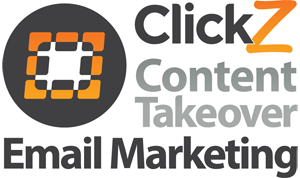6 Steps to Finding Your Personalization Sweet Spot
How to calculate the return on investment on email personalization efforts.
How to calculate the return on investment on email personalization efforts.
 Thanks to our industry’s continual drive to increase marketing relevance through personalization, consumers now expect brands to know them like their best friends. Brands that pull this off get treated like BFFs, too. Personalization, heading toward that theoretical goal of one-to-one marketing, certainly pays off.
Thanks to our industry’s continual drive to increase marketing relevance through personalization, consumers now expect brands to know them like their best friends. Brands that pull this off get treated like BFFs, too. Personalization, heading toward that theoretical goal of one-to-one marketing, certainly pays off.
Here’s a great example of how you can get creative with personalization. Allen Edmonds, a seller of men’s footwear, created an innovative campaign based on regional segmentation and temperature at time of open. Recipients where the weather was 41 degrees and above got a rain gear message; those where it was 40 degrees and below received an email about winterizing their wardrobes. The campaign increased click-through rates by more than 300 percent.


To learn about this retailer’s real-time personalization campaigns in greater detail, check out our on-demand webinar, which will be available from Thursday onward.
One-to-one marketing can carry a high cost in company resources, time, and money. If you’re thinking about increasing your investment in email personalization, the first thing you should figure out is, how much will it pay off? At what point will more investment no longer provide equal return? In other words, what’s your sweet spot?
The answer to this is unique to each company. It depends on factors including the kind of products sold, their price points, the purchasing cycle and customer characteristics. We’ve come up with an iterative process to help you find that personalization sweet spot. Here are six questions to ask before you begin to up your game:
Understanding current performance is, of course, the key to improvement – and broadening them could help you improve. Run the numbers on these key performance indicators:
Not all data is going to be relevant or useful, so assess what data is currently available to power effective personalization opportunities that are relevant to your brand. This may include information derived via site registration, progressive profiling or surveys; Web and/or mobile behavior; shopping and purchase history; and customer service.
Internal resource issues are often a barrier to improving personalization. For example, increasing segmentation of the list may require the development of separate creative and content for each email. Marketers must take the time to develop and implement new segments, while IT staff has to work to integrate that data with the email service provider’s systems. Would this investment move the needle enough to provide a return?
There’s a wealth of vendors, products, and services promising to help you get more data and get more out of it. They include CRM systems, contextual marketing platforms and plugins, website tagging and tracking mechanisms, social media management platforms, and platforms that provide mobile SMS/push notifications. Which of these will provide the biggest impact both short and long-term for your brand?
Here’s the heart of the ROI question, and the answer can be complex. For example, if segment size decreases, will the additional relevance and timeliness of emails increase the open rate or average order value? Maybe your conversion rate will increase because each email campaign will get more qualified buyers into the funnel. You need to determine what new performance metrics your personalization program needs to achieve in order to reap the reward of the extra dollars spent.
In the short term, making the case for increased expenditures on personalization come down to beating the ROI on “batch and blast” campaigns. But true ROI may come further down the line, as you increase customer retention, loyalty, and lifetime value. According to the book Marketing Metrics, the chance a company has to make a sale to a new prospect is just 5 to 20 percent. That zooms to 60 to 70 percent when it’s trying to sell to an existing customer.
More long-term ROI comes from creating and nurturing brand advocates, something that takes more than an email or two. Brand advocates not only spend more themselves, they influence others to sample and buy your products, potentially creating even more fans of your brand. According to Rob Fuggetta, author of the book Brand Advocates, their contributions to your bottom line can be five times that of a typical customer.
While you’re taking these steps to identify your personalization sweet spot, do a test drive to take your current personalization strategy one step forward. There’s likely some overlooked gold sitting in your existing database. For example, do you take advantage of information about a customer’s location? That can tell you a lot about the person’s current context. Similar to the Allen Edmonds campaign above, send one promotion to customers in areas where it’s cold and slushy, and a different one to those in sunny regions.
And, if all this seems a bit boggling, remind yourself of what Lao Tzu said: “A journey of a thousand miles begins with a single step.” That applies to personalization, too.
![]() *Sponsored content in collaboration with BlueHornet. Views expressed in this article are those of the guest author and do not necessarily reflect ClickZ’s opinions.
*Sponsored content in collaboration with BlueHornet. Views expressed in this article are those of the guest author and do not necessarily reflect ClickZ’s opinions.